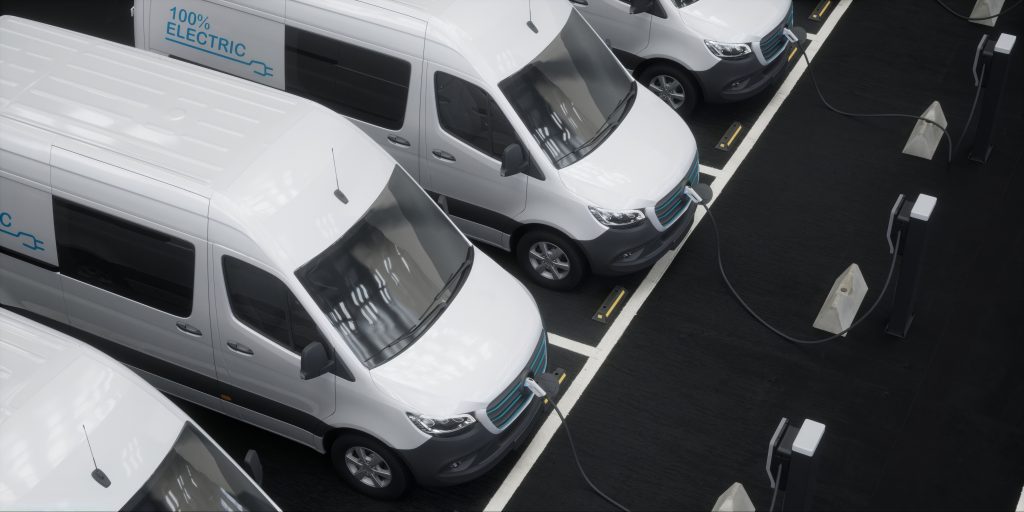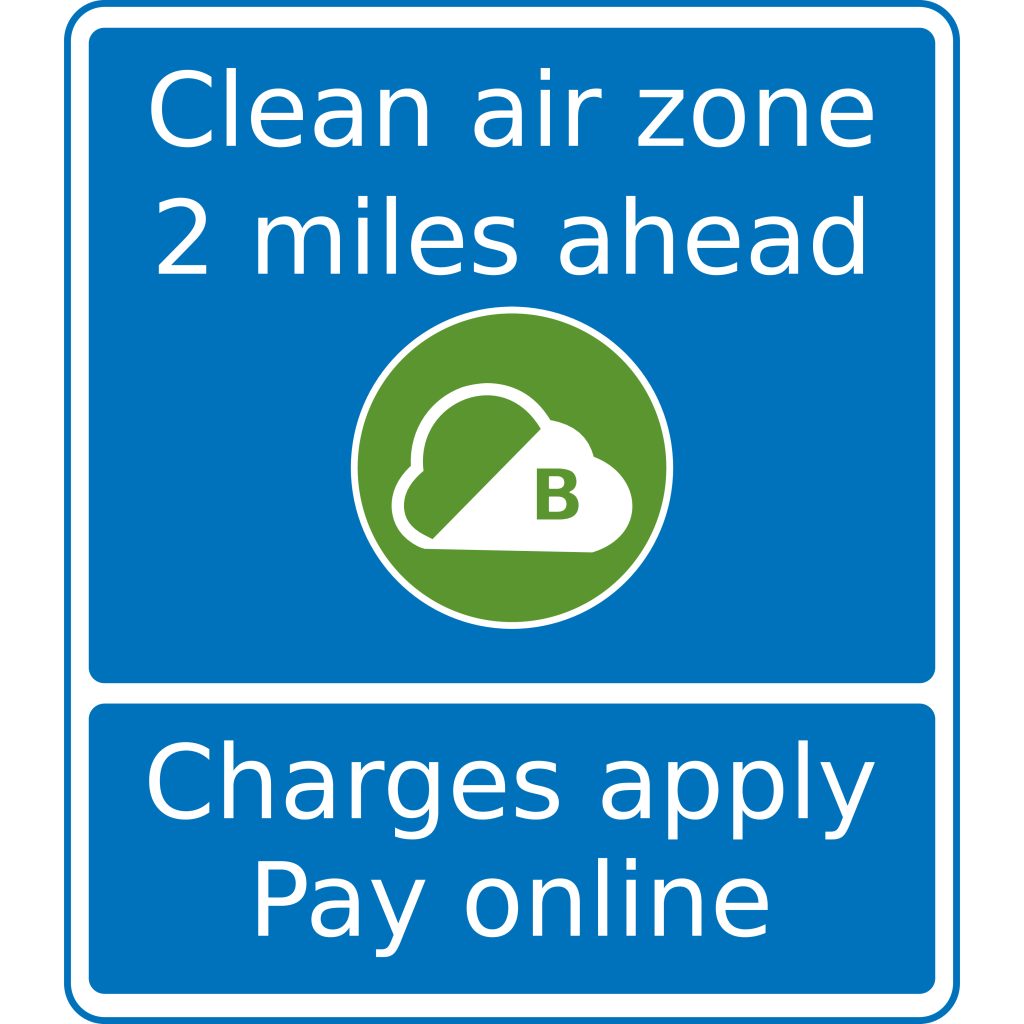According to research from motor manufacturer Vauxhall, vans are responsible for 18.2% of transport-related CO2 emissions in the UK and nearly 5% of the UK’s total carbon emissions each year. Vauxhall calculated emissions could be reduced by nearly 20 million tonnes every year if UK vans were replaced or converted into fully electric vehicles.1
While it may be unrealistic to wait for van drivers and owners to instantly replace their vehicles with electric vehicles (EVs), there are steps drivers can take to reduce their carbon footprint.

Courier Fleet Owners | What changes can you make to contribute to cleaner transport?
Courier fleet owners that switch to electric vans report a significant reduction in fuel costs, maintenance, and road tax costs, making them a cost-effective alternative to diesel vehicles, especially in the long run. If you’re a fleet owner or working your way to owning several vans, the following suggestions and case studies offer useful information.
UK government helps towards buying low emission vans
- The UK government are offering grants for people buying new low emission vans to support fleet and single van owners in switching to greener, cleaner technology. The grants are included in the discounted purchase price, not paid directly to the vehicle buyer. The government will pay for 35% of the price of a small low emission van, up to a maximum figure of £3,000. For larger vans, the government will pay up to 35% of the purchase price, up to £6,000.2 Criteria and vans included in the scheme can be found on the GOV.UK website.
Remapping the future
- Engine remapping can result in vehicles burning cleaner fuel, leading to reduced carbon deposits and improved power and performance. Engine remapping reconfigures a vehicle’s Electronic Control Unit (ECU), modifying it with updated software that improves the vehicle’s performance. BT Group implemented engine remapping in 2012, reporting their vehicle emissions were reduced by around 20%, the equivalent of taking 1,900 taxis off the road. Fuel costs were also cut by 10%, saving BT Group around £4 million a year.3
Aerodynamic design
- Yorkshire Ambulance Service (YAS) worked with Leeds University to develop a more aerodynamic ambulance that replaced the traditional ‘box’ shaped vehicles. The new ambulances had reduced ‘drag factor’ from 20% to 3%, returning an average of 21.18 miles to the gallon when clocking up over 560 miles per week. The strategy was calculated to potentially save YAS up to £700,000 a year in fuel and reduce its carbon emissions by 500 tonnes of CO2. Alexis Keech, environmental and sustainability manager for YAS stated, “There are financial benefits to be had by adopting technology that will reduce our carbon footprint.” 4
What does Courier Exchange (CX) say about carbon emissions?
We work with Courier Exchange (CX) as one of their appointed insurance partners. CX is a freight exchange that connects courier companies and drivers in real-time. Established in 2000, it’s the busiest and largest courier platform in the UK, helping drivers throughout the UK and Europe secure courier loads, and assisting fleet managers to find courier drivers. CX is one of the UK’s largest resources for people in the courier industry, listing over 170,000 courier loads every month. 5
In response to developments around reducing carbon emissions, CX stated:
“We anticipate our members making significant contributions towards achieving a more sustainable future and are actively looking at how we can continue to use our platform and innovative solutions to assist them in their journey.
Although the transition may not be immediate for everyone, multiple reports suggest companies such as DPD and Royal Mail are making strides in reducing carbon emissions and implementing measures for a greener fleet and distribution network.
We’re looking forward to welcoming everyone on our platform and working with them to create effective solutions that can enable businesses to make a positive impact on the environment.
For us, this is not just about aligning with the times, but also about being committed to facilitating collaborative and efficient efforts amongst our members in building a greener future for everyone.”
– Karl Anthony, Sales Team Leader at Courier Exchange, Transport Exchange Group

Van Drivers | How can you reduce your carbon footprint?
As a van driver there are steps you can take to reduce your carbon emissions and economise on fuel.
- Eliminate any harmful deposits that have built up in your vehicle’s fuel and exhaust system which can reduce fuel efficiency and increase exhaust emissions. Use a cleaning fluid formulated specifically for cleaning fuel systems.
- Fill your van with premium fuels often labelled as “super”, “premium” or “ultimate”, which can improve the performance of your vehicle. These types of fuel have cleaning agents which can remove dirt and grime from your vehicle’s engine, lower carbon emissions, and improve fuel efficiency.
- Avoid leaving your van’s engine running, even when you’re in heavy traffic. If you’re parked for a delivery and might be waiting longer than 10 seconds, switch the engine off as this wastes more fuel than restarting the engine. A 2020 study by Idling Action in conjunction with Transport Research Laboratory concluded that over £58 of fuel is lost every six months if a vehicle idles for 10 minutes a day.6 No-idling zones may be introduced in cities and towns, so it’s good to get into the habit soon.
- Regularly maintaining a sufficient fuel level can help optimize engine performance and reduce emissions, which can minimise the environmental impact of driving. When a vehicle’s fuel tank is nearly empty, it may cause the engine to work harder, increasing emissions of CO2 and other pollutants such as nitrogen oxides and particulate matter. Additionally, running on low fuel can lead to fuel inefficiency and potential fuel leaks, further contributing to environmental harm.
By reducing the number of unnecessary van journeys, you can decrease the overall emissions released into the atmosphere, which can mitigate air pollution and contribute to combatting climate change.

Clean Air Zones
Following London’s lead, several UK cities now have Clean Air Zones which charge van drivers and other types of vehicles for driving in certain areas. However, if your van meets the minimum standard of Euro 6 (diesel), Euro 4 (petrol) and Euro VI for HGVs, you could be exempt from charges. As a driver you can check whether you need to pay for driving through a Clean Air Zone before your journey. You can find out whether your vehicle will be charged in a Clean Air Zone or pay a vehicle charge, by visiting the GOV.UK website. For Clean Air Zone support, call this helpline: 0300 029 8888.
If you need to find out emissions for a van or light commercial vehicle, the vehicle manufacturer’s websites will usually have this information.
Electric Vehicles (EVs)
As of the end of 2023, there are 975,000 fully electric cars and 590,000 plug-in hybrids, in the UK.7 If you currently own an electric car or van, we can source cover for your vehicle that is competitively priced, fast, and hassle-free.
To talk to our team of experts about the van insurance, please don’t hesitate to contact us. If you’d like to discuss electric car insurance, get in touch today.
Call: 0344 776 5305
Fill in our quick & easy contact form: https://www.businesschoicedirect.co.uk/contact-us/
- https://www.fleetnews.co.uk/news/van-news/2023/04/19/vauxhall-suggests-20m-tonne-co2-saving-from-switch-to-electric-vans
- https://www.gov.uk/plug-in-vehicle-grants/vans
- https://courierexchange.co.uk/courier-loads/
- https://www.rac.co.uk/drive/news/air-quality/clean-air-day-research-reveals-the-importance-of-avoiding-idling-your-engin/
- https://www.zap-map.com/ev-stats/ev-market#:~:text=EV%20market%20stats%202023&text=With%20increasing%20consumer%20demand%20and,further%20590%2C000%20plug%2Din%20hybrids.
Business Choice Direct Insurance Services is a trading name of Specialist Broking Retail Limited who are authorised and regulated by the Financial Conduct Authority. Specialist Broking Retail Limited is registered in England and Wales No. 10301653. Registered Office: Affinity House, Bindon Road, Taunton, Somerset, TA2 6AA.
